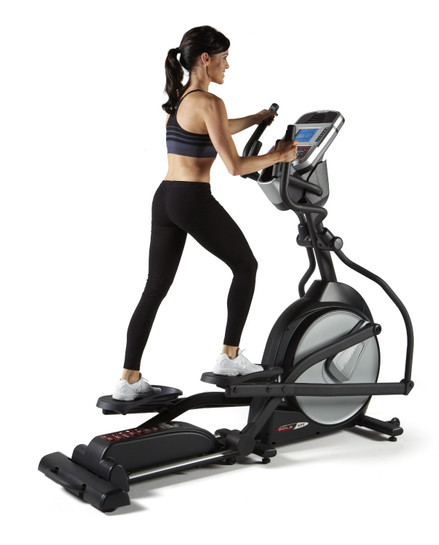How Accurate Is The Pulse Monitor On My Elliptical?
The Science Behind It: Evaluating the Accuracy of Pulse Monitors on Ellipticals
## Introduction to pulse monitors on ellipticals
Pulse monitors on ellipticals have become a popular feature for fitness enthusiasts looking to track their heart rate during workouts. These monitors provide valuable information about the intensity of the workout and help users stay within their target heart rate zones. However, there has been some debate about the accuracy of these pulse monitors. This article will delve into the science behind pulse monitors on ellipticals and evaluate their accuracy.
Importance of measuring heart rate during exercise
Measuring heart rate during exercise is crucial for several reasons. Firstly, it allows individuals to monitor their cardiovascular fitness and track improvements over time. By knowing their heart rate, users can determine if they are working at an appropriate intensity level to achieve their fitness goals. Additionally, monitoring heart rate can also help identify any potential health concerns or irregularities that may arise during exercise. It's important to have accurate pulse monitors on ellipticals to ensure users can make informed decisions about their workouts.
Factors that affect the accuracy of pulse monitors
Several factors can influence the accuracy of pulse monitors on ellipticals. One significant factor is the positioning of the user's hands on the handles or grips. For accurate readings, users must maintain proper contact with the sensors on the handles. Any gaps or inconsistent contact may result in inaccurate readings. Another factor is the individual's unique physiological characteristics. Factors such as skin temperature, hydration levels, and skin pigmentation can affect the accuracy of the readings. Additionally, the quality and calibration of the sensors themselves play a crucial role in accurate heart rate measurements.
Common issues with pulse monitors on ellipticals
Despite the advancements in pulse monitoring technology, there are still some common issues that users may encounter with pulse monitors on ellipticals. One common issue is signal interference. This can occur when there are other electronic devices nearby, such as smartphones or televisions, which can disrupt the signal between the user and the pulse monitor. Another issue is movement artifacts. Users need to maintain a steady grip on the handles to minimize any movement artifacts that may interfere with the accuracy of the heart rate readings. Finally, sweat can also affect the accuracy of the pulse monitors. Excessive sweat on the handles can create a barrier between the user's skin and the sensors, resulting in inaccurate readings.
Evaluating the accuracy of pulse monitors on ellipticals
To evaluate the accuracy of pulse monitors on ellipticals, several studies have been conducted. These studies compare the readings from pulse monitors on ellipticals with more accurate methods of measuring heart rate, such as chest strap monitors or electrocardiograms (ECGs). The results have shown that pulse monitors on ellipticals can provide reasonably accurate heart rate readings, but there may be some discrepancies compared to more precise methods. It's important for users to keep in mind that these monitors are designed for general fitness tracking and not medical-grade measurements.
Comparison of pulse monitors on different elliptical brands
Different elliptical brands may use different technologies and sensor placements for their pulse monitors, which can affect the accuracy of the readings. Some brands may have more advanced sensors that provide more accurate readings, while others may have less reliable sensors. It's important for users to research and compare different elliptical brands to ensure they choose one with a pulse monitor that meets their accuracy requirements. Reading customer reviews and consulting with fitness professionals can also provide valuable insights into the accuracy of pulse monitors on different elliptical brands.
Tips for getting accurate heart rate readings on ellipticals
To ensure accurate heart rate readings on ellipticals, users can follow a few tips. Firstly, they should make sure to maintain consistent contact with the sensors on the handles throughout the workout. Users should also avoid any excessive movement or gripping the handles too tightly, as this can introduce artifacts into the readings. Additionally, wiping down the handles before starting the workout can help remove any sweat or moisture that may interfere with the sensors. Lastly, users can periodically check their heart rate manually by stopping the elliptical briefly and feeling their pulse to compare it with the monitor's readings.
Alternative methods for measuring heart rate during exercise
While pulse monitors on ellipticals are convenient, there are alternative methods for measuring heart rate during exercise. One popular alternative is chest strap heart rate monitors. These straps are worn around the chest and provide more accurate readings compared to pulse monitors on ellipticals. Another alternative is wearable fitness trackers that use optical sensors to measure heart rate from the wrist. These devices are becoming increasingly popular and provide users with the flexibility to track their heart rate during various activities, not just on ellipticals.
The future of pulse monitoring technology on ellipticals
As technology continues to advance, the future of pulse monitoring on ellipticals looks promising. Manufacturers are constantly working on improving the accuracy and reliability of pulse monitors. Some companies are exploring new sensor technologies, such as photoplethysmography (PPG), which uses light to measure blood flow and heart rate. These advancements can lead to more accurate and seamless heart rate monitoring experiences on ellipticals. Additionally, the integration of artificial intelligence (AI) algorithms can further enhance the accuracy of pulse monitors and provide users with more personalized feedback and insights.
Conclusion
Pulse monitors on ellipticals are valuable tools for tracking heart rate during workouts. While they may not provide medical-grade accuracy, they can still offer reasonably accurate readings for general fitness tracking purposes. Users should take into account factors that can affect the accuracy of pulse monitors, such as hand positioning and sensor quality. Additionally, exploring alternative methods, such as chest strap monitors or wearable fitness trackers, can provide users with more accurate heart rate measurements. As technology continues to advance, the future of pulse monitoring on ellipticals looks promising, with the potential for even more accurate and seamless experiences.


